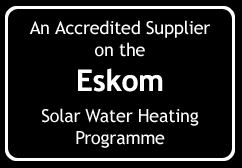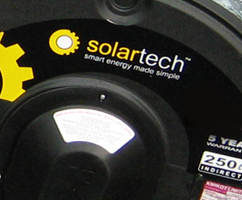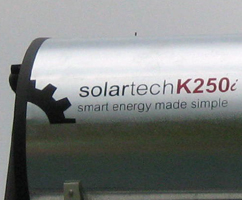

October 28th 2010Energy Minister Dipuo Peters has laid down a solar challenge to the private sector and government in the Northern Cape - to make Upington a solar capital of the world. "It is time this town "went solar," said Peters in her address to delegates gathered for the solar investor conference, which started on Thursday. "Upington maak 'n plan. Don't follow the crowds, follow the sun!" she quipped. Peters even questioned why the traffic lights in Upington were not solar powered. "Let's get the whole town heating its water through solar water heaters. Let's have the lights solar powered. There are companies here today who can make that happen, there are investors who can structure the financial packages to pay for this," she said. The Northern Cape has been selected as the base for the creation of a 'Solar Park', which could serve as a concentrated zone of solar development in South Africa. The area had excellent and consistent radiation, flat and sparsely-populated land, the ability to connect to the electricity grid at multiple points, water available from the Orange River, a developed highway system, and the Upington airport, which made it an ideal location for solar deployment. Department of Energy (DoE) director general Nelisiwe Magubane said that solar energy industrialisation in Upington implied the development of new skills for the local populace thus enhancing their employability. She added that the park presented a major opportunity to diversify South Africa's industrial base and create significant much-needed decent jobs. A full feasibility study of the solar park concept and its proposed phased development was currently being conducted, following a positive pre-feasibility study, which was concluded earlier in the year by the Clinton Climate Initiative. It was envisaged that the solar park could expand to produce 5 000 MW of solar power over a ten-year deployment horizon, in a territory stretching from Upington to De Aar. A Solar Park Authority would be established, and bulk infrastructure, such as water, electricity and transport solutions, would be provided for different project developers. Land access would also be provided, and the environmental impact assessment process made easier. This would make project development easier. The DoE indicated that site preparation could take place as early as 2011, and once regulatory and legislative hurdles were cleared, solar plants, which have been selected through the competitive bidding process, could start producing solar power by the second half of 2012. Source: Engineering News |




